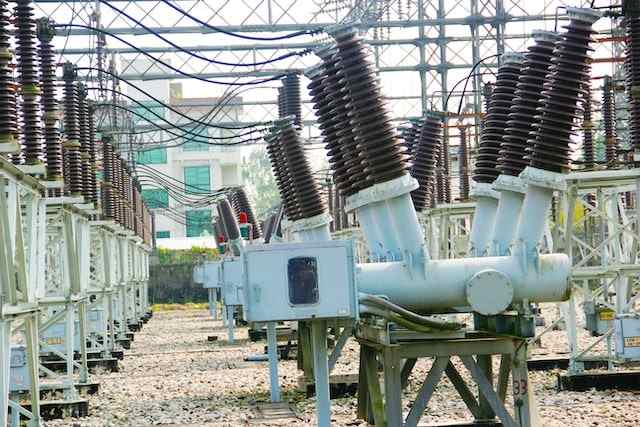A transformer is an electrical device that transfers electrical energy between two or more circuits by means of electromagnetic induction. It consists of two coils of wire, called primary and secondary windings, which are usually wound around a common magnetic core. The primary winding is connected to the source of electrical power, the secondary winding is connected to the load receiving the converted electrical power.
Working Principle of Electrical Transformer
The working principle of the transformer is based on electromagnetic induction. Transformers work on the basic principle that a changing magnetic field induces an EMF or voltage in a coil. A transformer is designed to work with alternating current (AC). When an AC voltage is applied to the primary coil of a transformer, it creates a changing magnetic field around the coil.
The primary coil is wound around a magnetic core, usually made of laminated iron or other material with high magnetic permeability. When AC current flows through the primary coil, it creates a magnetic field that alternately expands and collapses around the core.

A changing magnetic field induces a voltage in the secondary coil. According to Faraday’s law of electromagnetic induction, the induced voltage (EMF) in the secondary coil is proportional to the rate of change of the magnetic flux. Magnetic flux is a measure of the magnetic field passing through the coil.
The ratio of the number of turns in the primary coil to the number of turns in the secondary coil determines the voltage change. If the primary coil has more turns than the secondary coil, it is a step-down transformer and lowers the voltage. Conversely, if the primary coil has fewer turns, it is a step-up transformer and increases the voltage.
The secondary coil is connected to a load (such as electrical appliances, industrial machinery or other devices) that requires a converted voltage. The load “draws” electrical power from the secondary coil.
In an ideal transformer with no losses, the power on the primary side (the product of voltage and current) is equal to the power on the secondary side. However, real transformers have some losses due to factors such as resistance, core losses and leakage flux.
Main Components and Function of Transformer
Primary Coil
The coil of wire connected to the input voltage source is called primary coil. When alternating current (AC) flows through the primary coil, it creates a changing magnetic field around it.
Secondary Coil
The wire coil connected to the load is called secondary coil. The changing magnetic field produced by the primary coil induces an EMF or voltage in the secondary coil.
Magnetic Core
The coils are usually wound around a magnetic core, often made of laminated iron or other materials with high magnetic permeability. The core increases the efficiency of energy transfer by concentrating the magnetic field.
Transformers are Important in Power Distribution System for the Following Reasons
Voltage Conversion
Transformers are used to step up (step up) or step down (step down) voltage levels for efficient transmission and distribution of power.
Isolation
They provide electrical isolation between the primary and secondary circuits, preventing direct electrical contact and improving safety.
Efficiency
Transformers are highly efficient devices for converting electrical energy and minimizing power loss during transmission.
Advantages of Transformers
1. Transformers allow voltages to be efficiently stepped up or down, facilitating the transmission and distribution of electricity over long distances with minimal power loss.
2. Transformers are available in a variety of sizes and configurations, making them adaptable to different power applications, from small electronic devices to large power distribution networks.
3. Transformers are robust and reliable devices with long operational life when properly maintained. They are an important part of the electricity infrastructure.
4. Transformers generally require low maintenance, especially during normal operation. Regular checks and inspections are usually sufficient to ensure their continued performance.
Disadvantages of Transformers
1. Size and weight: Large transformers are bulky and heavy, posing challenges in terms of transportation, installation and space requirements.
2. High quality transformers, especially those designed for high voltage and power applications, are expensive to manufacture and purchase.
3. Transformers can produce audible noise, especially in high power applications. This noise is often associated with the magnetic resonance of the core material and may require mitigation measures in sensitive environments.
